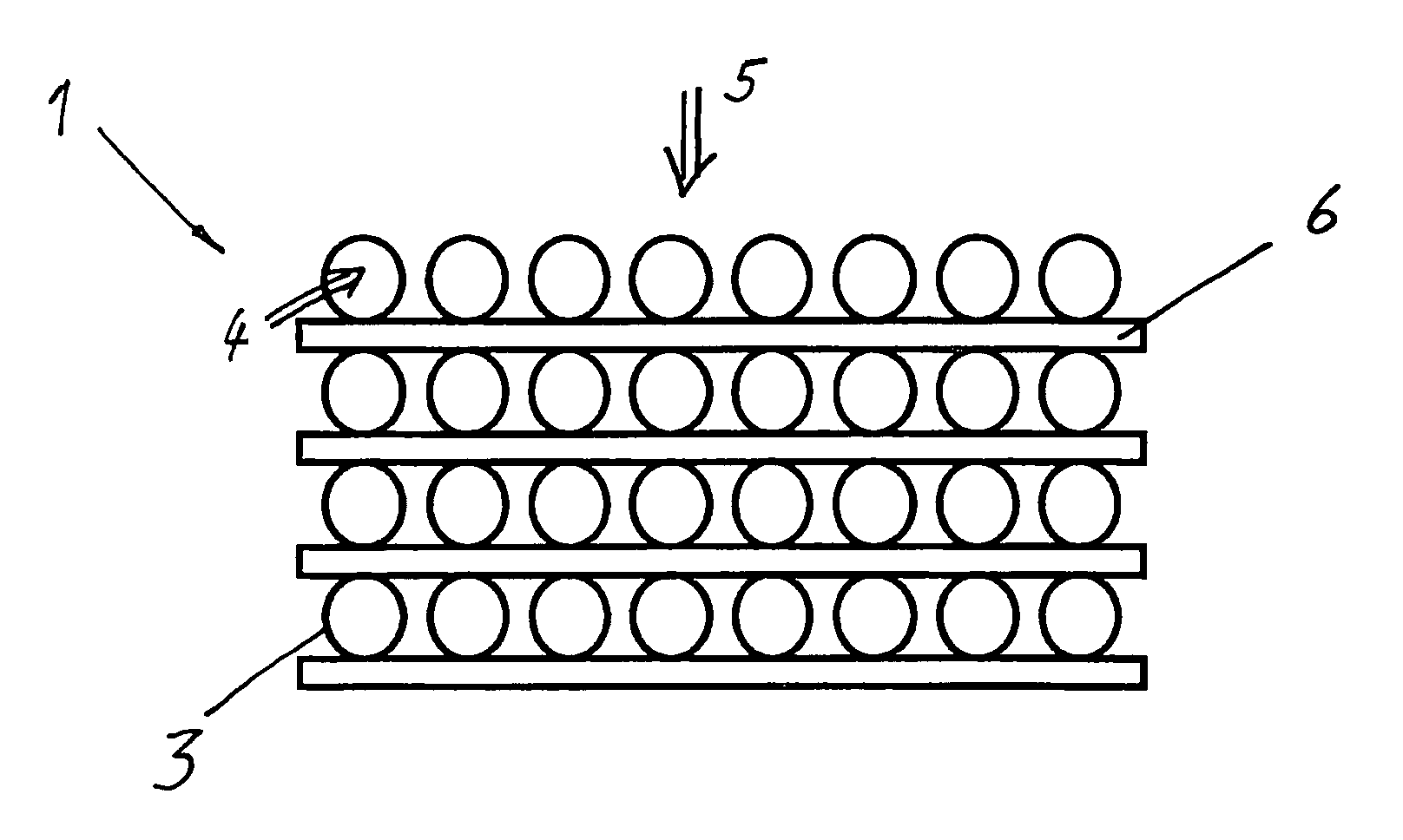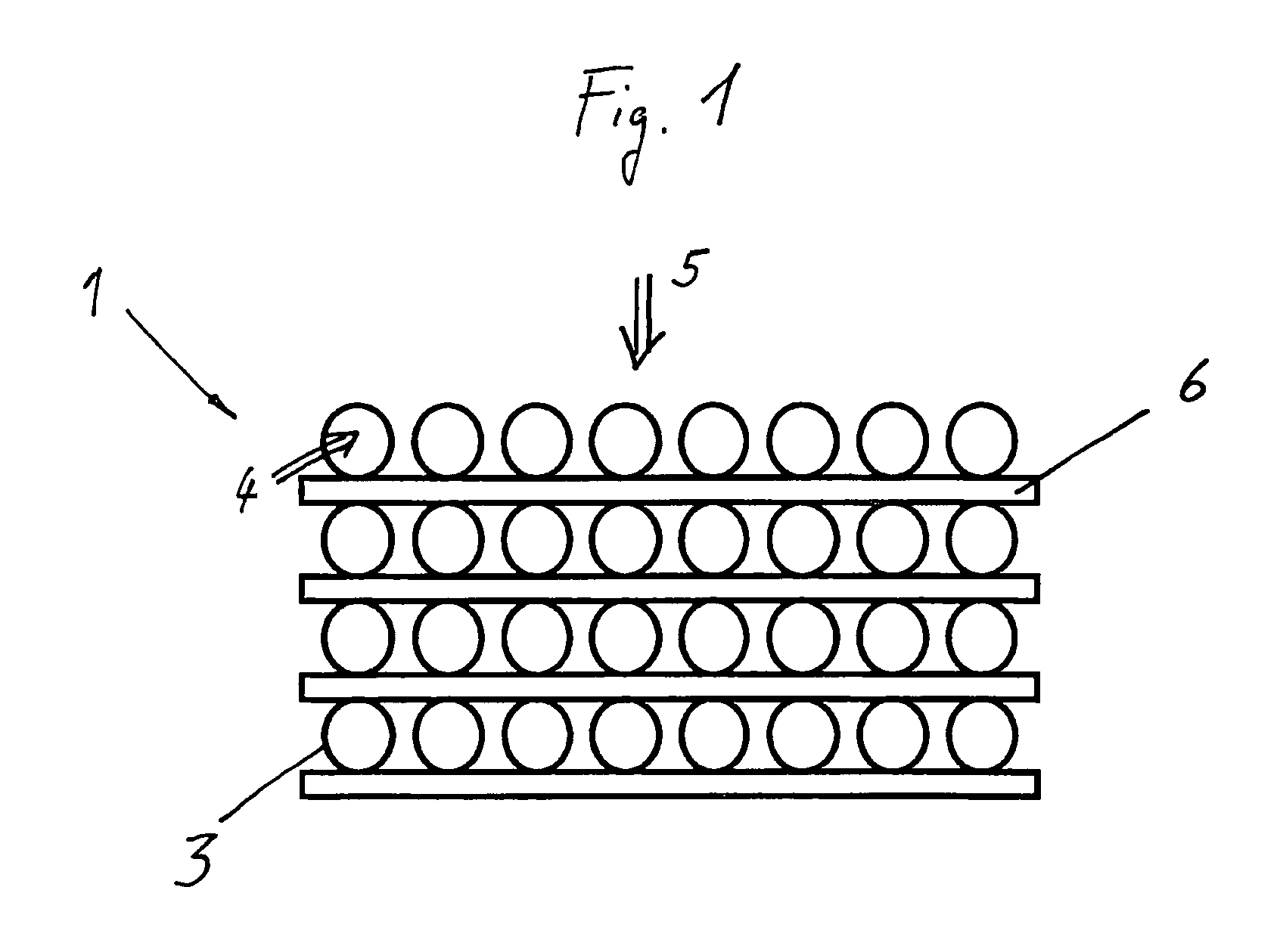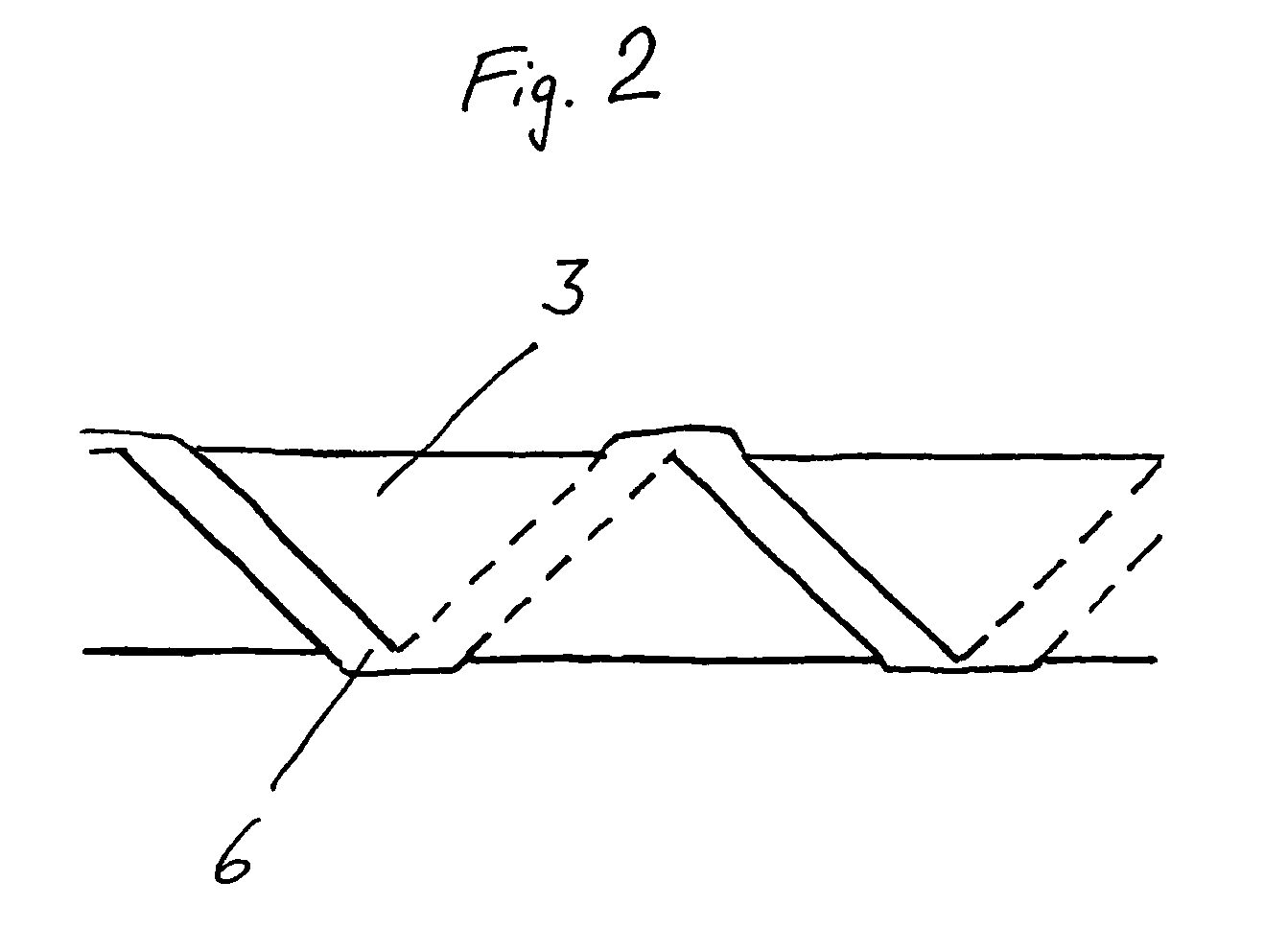Hollow fiber system
a technology of hollow fiber and fiber, applied in the field of hollow fiber arrangement, can solve the problem of constant pressure loss over the inflow area, and achieve the effect of uniform mass transfer
- Summary
- Abstract
- Description
- Claims
- Application Information
AI Technical Summary
Benefits of technology
Problems solved by technology
Method used
Image
Examples
Embodiment Construction
[0022]FIG. 1 shows a hollow fiber arrangement 1 that is particularly well-suited for a humidifier 2 of a fuel cell. The hollow fiber arrangement 1 is made up of hollow fibers 3 that are permeable to water-vapor, whereby a first air stream 4 can be conducted inside the hollow fibers 3 and a second air stream 5 can be conducted outside of the hollow fibers 3. The hollow fibers 3 are spaced at a distance from each other by a device 6. In this embodiment, the device 6 is in the form of a flat web of nonwoven material arranged perpendicular to the second air stream 5. The web of nonwoven material consists of synthetic fibers joined to each other in such a way that the forward resistance is low. In other embodiments, the device 6 can be also made of an open-cell foam, especially a polyurethane foam.
[0023]FIG. 2 shows a hollow fiber 3 that is surrounded like a spiral by the device 6. The device 6 consists of a narrow strip of nonwoven material.
[0024]FIG. 3 shows a hollow fiber arrangement ...
PUM
| Property | Measurement | Unit |
|---|---|---|
| distance | aaaaa | aaaaa |
| packing densities | aaaaa | aaaaa |
| diameters | aaaaa | aaaaa |
Abstract
Description
Claims
Application Information
 Login to View More
Login to View More - R&D
- Intellectual Property
- Life Sciences
- Materials
- Tech Scout
- Unparalleled Data Quality
- Higher Quality Content
- 60% Fewer Hallucinations
Browse by: Latest US Patents, China's latest patents, Technical Efficacy Thesaurus, Application Domain, Technology Topic, Popular Technical Reports.
© 2025 PatSnap. All rights reserved.Legal|Privacy policy|Modern Slavery Act Transparency Statement|Sitemap|About US| Contact US: help@patsnap.com



